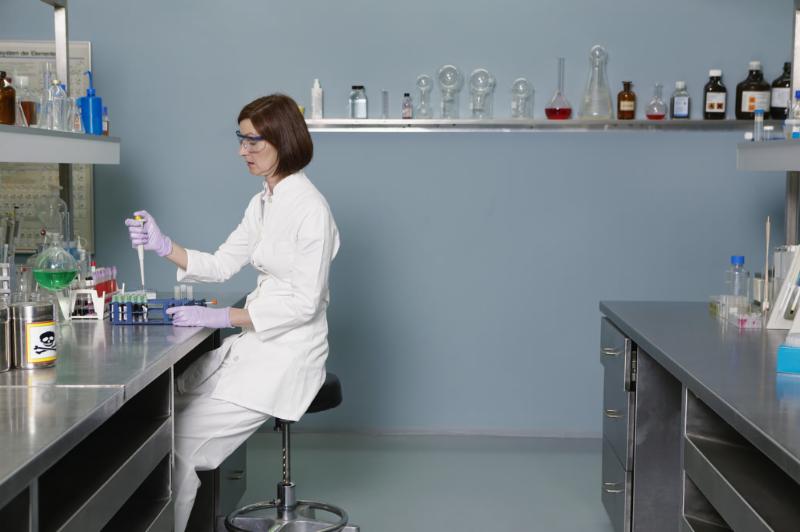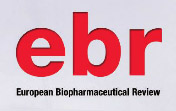|
 |
Welcome to BioMarketing Insight's monthly newsletter.
We have a new mobile friendly newsletter. Love to receive your feedback.
Last month I covered Our Microbiome and Its Relationship to Different Diseases. If you missed last month's article, click here to read it. This month's newsletter will cover President Obama's Precision Medicine Initiative: Is this feasible?
Read on to learn more about this topic and other current news at the Table of Contents below. The next newsletter will be published on October 15th.
We encourage you to share this newsletter with your colleagues by using the social media icons at the top, or by simply forwarding this newsletter or use the link at the bottom of this newsletter. Should you or your colleagues want to join my mailing list, click on the icon below or scan the QR code.
Please email me, Regina Au, if you have any questions, comments, or suggestions. Sincerely, Regina Au New Product Planning/ Strategic Marketing Consultant
|
|
Join our mailing list for mobile
| |
|
|
|
Developing a Product?  Commercializing a Product?
| |

If you are developing a product and have not conducted the business due diligence to determine commercial viability or success, contact me for an appointment. For successful commercial adoption of your product or looking to grow your business, contact me for an appointment.
For more information on our services, click on the links below:
Product Development
Market Development
Marketing Strategies
Top
|
Save the Date: Women Business Leaders  Conference - Oct. 22 - 23, 2015 Conference - Oct. 22 - 23, 2015 | |
 I am pleased to announce that I will speak at the Center for Women & Enterprise, 2015 Women Business Leadership Conference. My presentation will be on "You Don't Have to Do it Alone: How to Find Mentors, Advisers, and Other Resources," Friday, October 23, at 3:10 pm. For more information on the conference, click here. Top
|
Stem Cell Research: Under Investigation  | |
 I am pleased to announce that my article "Stem Cell Research: Under Investigation has been published in the July 2015 issue of European Biopharmaceutical Review (EBR). To read an electronic version, click here and go to page 30. Top |
From Genetic Engineering to Genome Engineering: What Impact Has it Made on Science and Society? Engineering: What Impact Has it Made on Science and Society?
| |
 I am pleased to announce that my article "From Genetic Engineering to Genome Engineering: What Impact Has it Made on Science and Society?" was published in May 2015 in the Advanced Biology, Biotechnology and Genetics Journal. To read an electronic version, click here. Top |
President Obama's Precision Medicine Initiative Is this feasible? Is this feasible?
|
|

In January 2015, President Obama launched the Precision Medicine Initiative (PMI), with this quote: "Doctors have always recognized that every patient is unique, and doctors have always tried to tailor their treatments as best they can to individuals. You can match a blood transfusion to a blood type - that was an important discovery. What if matching a cancer cure to our genetic code was just as easy, just as standard? What if figuring out the right dose of medicine was as simple as taking our temperature?" -- President Barack Obama, January 30, 2015.
This is synonymous with Personalized Medicine (PM). Federal agencies and private-sector groups have made important commitments to undertake the following:
- Make health data more portable;
- Ensure patients can easily access and share their own health information, including contributing it for research;
- Rigorously protect patient privacy, security and choice; and
- Support new research platforms connecting researcher and participants as partners.
Government Administration programs include the following:
- Guiding Principles for Protecting Privacy and Building Trust:
- New Tools for Patients: Address barriers that prevent patients from accessing their health data.
- Research Awards to Unlock Data Insights:
Private-sector programs include the following:
- Duke Center for Applied Genomics and Precision Medicine:
- MeTree platform to help individuals have the necessary conversations with loved ones and care providers about family health histories, in order to tailor care to patients' unique risk profiles.
- Flip the Clinic:
- Clinicians and staff practicing across the United States, to inform patients about their right to obtain digital copies of their medical records.
- Genetic Alliance:
- a data registry called Platform for Engaging Everyone Responsibly (PEER)
- GetMyHealthData:
- Campaign to help thousands of consumers over the next 12 months access and download their own clinical health data; to understand and improve their health, their care, and the system.
- Sage Bionetworks:
- Support clinical studies that import electronic health-record information to its open source research platform and release open-source informed-consent prototypes to support those studies.
In addition, the FDA is developing a program called "PrecisionFDA", to change the way molecular diagnostics are developed, evaluated, and regulated in the U.S. "We're not saying PrecisionFDA is going to be the regulatory system necessarily," says Taha Kass-Hout, the FDA's chief health informatics officer. "But it's definitely going to be a tool that will help streamline innovation and the process of validating [tests]."
The purpose of this initiative is to get the diagnostic community (manufacturers, physicians and FDA) together to develop standards that determine which tests are credible and which aren't, in order to improve the chances of receiving FDA backing. Currently, most diagnostic tests fall under "laboratory-developed tests (LDT)" , which currently aren't subject to rigorous regulatory oversight in the way that developers of new drugs and medical devices are. The FDA has begun to implement more aggressive regulation for more "high-risk" LDTs that will impact healthcare decisions for patients, in particular those who agree to use molecular diagnostics. I discussed this in more detail in my article entitled "Regulatory Challenge: Rapid Response," Taha Kass-Hout hopes this PrecisionFDA initiative will be part of the regulatory setting.
While PMI/PM is the trend of the future, to achieve better patient care and reduce healthcare costs, there are a number of challenges that need to be addressed before these goals come to fruition.
In our current environment, diagnostic companies are challenged by the reimbursement boondoggle, because the corporate payers want to limit testing for particular diseases when they decide it is not cost effective. Hence the controversy over mammograms for women and PSA tests for men regarding who should be tested; the criteria for age and other potential risk factors, may hamper patient reimbursement. Moreover, the payers may cover a diagnostic test, but the percent covered is another discussion in itself, if that diagnostic test is limited to certain populations that either rule-in or rule-out certain patient groups, thereby, eliminating unnecessary further testing and procedures.
PMI/PM presents the ideal opportunity for the medical and diagnostic test manufacturing communities to determine which diagnostic tests are able to accurately either rule-in or rule -out with acceptable certainty whether a patient has, or doesn't have, a specific disease. This is easier said than done, I'm afraid. Except for a handful of diseases, scientists often don't understand enough about diseases to develop companion diagnostic tests with therapeutics. Even with recent advanced technology that enables the sequencing of a person's whole genome and looking for biomarkers, scientists haven't been able to identify the relevant biomarkers to develop diagnostic tests with 100% sensitivity and specificity.
Collaboration between academics, industry and nonprofit research organizations/advocate organizations in sharing information would accelerate basic research and development, ---except each stakeholder has different goals. Academics need to publish papers and be the first; industry needs to protect their intellectual property (IP), since there is no company without IP and they as well want to be first to market; and research organizations/advocate organizations just want to get something relevant to patients as quickly as possible.
This will be the same challenge that the PrecisionFDA program will face. How do you get everyone to share information in an open-source format and still satisfy everyone's needs?
For academics, the "publish or perish" rule is unlikely to change. If researchers fail to publish an extraordinary number of papers, they cease to be regarded as thought leaders and they become irrelevant.
For industry, IP is the only thing that diagnostic companies can control and therefore they guard it fiercely. The diagnostics business is tough for three big reasons: 1) Companies will generally launch a product and spend at least a couple of years with little to no revenue, to gather real-world evidence in an attempt to satisfy reimbursement requirements (and there is no guarantee the test will be reimbursed); 2) Since the cost of sequencing is getting cheaper and cheaper, this means that more medical centers will be doing a lot of molecular diagnostics themselves; and 3) In 2013, the U.S. Supreme Court ruled that companies can't patent genes, meaning companies can no longer have exclusive rights to the detection and analysis of isolated genes, as Myriad Genetics once did with mutations that carry higher risk of breast cancer.
In addition, there are only a handful of investors that will finance life science companies because the ROI cycle is too long and most of them don't invest in diagnostic companies due to the business model. Once a patient is diagnosed or ruled-out, there is no need for another test anytime soon, as in the example of a colonoscopy test. If a patient is normal, they won't need another test for 10 years. Treatment of a given disease, in contrast, may mean a life-long commitment to a drug regimen.
Like orphan drugs and antibiotic research, there needs to be government incentives or initiatives for diagnostic development. Partnering with pharma/biotech companies will help, but will not solve the problem.
Since NIH funding for research continues to diminish and as a result, academic institutions are looking to industry for collaborations that are a conduit for more funding, and industry is looking to collaborate with academics for basic research. Both parties would be well-served if they would strive to accommodate each others' needs and work to find win-win solutions.
Top
|
Closing Thoughts  | |

It is getting harder and harder for a diagnostic company to survive in our current environment for the reasons stated above. Precision Medicine/Personalized Medicine have the ultimate goal in diagnosing a patient in early stage, before a disease progresses to the point where it's irreversible. However, there are formidable challenges: 1) Funding required to accelerate basic research that promotes the understanding of how diseases occur, in order to develop a molecular diagnostic test and 2) an easier reimbursement path from the corporate payers of diagnostic tests.
The initiatives started under Obama's Precision Medicine all deal with electronic medical records. While these initiatives are good in trying to incentivize patients to take charge of their own health (patient centric focus), the crux of the problem lies in the reasons mentioned in this article.
This whole medical industry is in a state of transition because of ObamaCare, so why don't we make the changes discussed earlier, now that change is the "new norm" in accomplishing what is needed, so that this whole industry can move towards personalized medicine?
Top
|
New Technology - 
'Master Switch' Behind Obesity
| |
 Researchers from the Massachusetts Institute of Technology and Harvard Medical School discovered a new genetic pathway that controls human metabolism by prompting fat cells to store or burn away fat. "Obesity has traditionally been seen as the result of an imbalance between the amount of food we eat and how much we exercise, but this view ignores the contribution of genetics to each individual's metabolism," said senior author Manolis Kellis, a professor of computer science and a member of MIT's Computer Science and Artificial Intelligence Laboratory and of the Broad Institute, in a release. They found that those at risk for obesity had switchboards that turned on two distant genes - IRX3 and IRX5. Further researched showed that these two genes act as master controllers of how fat cells either burn fat as it releases the energy as heat, or store it.
To read the full article from the Boston Business Journal, click here.
|
|
|
 |
|
|